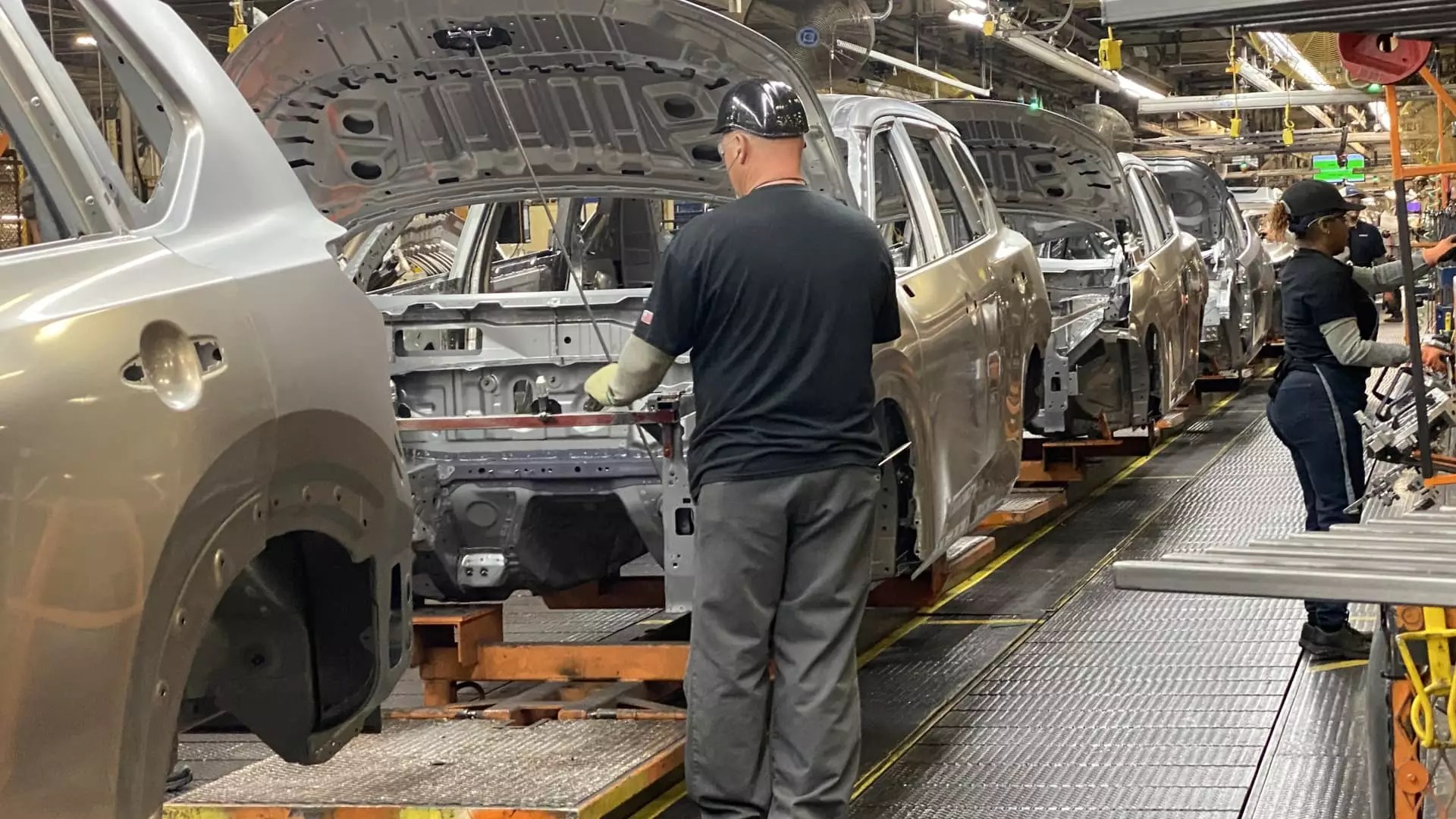President Donald Trump’s 25% tariffs on imported vehicles have reverberated throughout the automotive industry, revealing alarming truths that threaten to reshape the landscape of the market. While purportedly a strategy for protecting domestic manufacturing, these tariffs are creating systemic pressures that could destabilize an industry already dealing with myriad challenges. Analysts estimate that this policy could lead to the loss of millions in vehicle sales and inflict over $100 billion in added costs. Such figures paint a stark picture of not just a deliberate economic reshuffle, but a potential long-term structural crisis for the automotive sector in the United States.
Felix Stellmaszek of the Boston Consulting Group forecasts that these tariffs alone could result in an additional expense of nearly $160 billion annually. More disturbingly, the costs are expected to impact 20% of U.S. new-vehicle market revenues, trapping manufacturers in a cycle of increased production costs that they might struggle to absorb. The center-right view posits that the government’s intention to stimulate American manufacturing is commendable, but the execution appears catastrophic, jeopardizing consumer access to affordable vehicles and the future of many auto companies.
Impact on Vehicle Affordability
Increased tariffs are poised to drive vehicle prices upward at an astonishing rate, which turns the notion of affordability on its head. Cox Automotive identifies the average cost of a new vehicle hovering around $50,000, an already staggering figure that does not reflect the concomitant rise in financing costs. Rising auto loan rates have recently climbed to nearly 9.64% for new vehicles and 15% for used ones, luring consumers into dire financial scenarios. Instead of safeguarding American jobs, these policies risk locking consumers out of the auto market altogether.
Historically, American consumers have enjoyed relative accessibility to vehicles woven into the fabric of everyday life. However, what we now observe is a suffocating climb in prices across the spectrum. Goldman Sachs analysts predict a surge in net vehicle prices of anywhere from $2,000 to $4,000 in the next year. Such increases are not merely numbers on a spreadsheet; they represent a tangible loss of purchasing power for the average American family. Politicians should weigh whether enhancing job numbers in manufacturing sectors outweighs driving everyday consumers away from the very products those jobs are meant to support.
Market Responses and Manufacturer Struggles
In response to the looming threat of these tariffs, various manufacturers are forced into reactive maneuvers that reveal just how fragile the industry has become. Domestic companies like Ford and Stellantis are resorting to short-term measures like employee pricing deals to alleviate the pain; a tactic that feels more like a patch than a solution. Meanwhile, foreign companies, such as Jaguar Land Rover, have begun halting shipments to the U.S., predicting that the financial logic does not favor the American market under these conditions.
The scenario is not just a tale of disparity between domestic and foreign production; it is indicative of a broader malaise within an industry striving to carve out sustainable pathways amid government-imposed restrictions. Such strategic retreats reflect a vulnerability that threatens the viability of future investments and innovation. Those who believe the auto industry can easily endure tariffs and maintain price levels are overlooking the harsh reality that sustained financial pressures often result in crisis-level decisions that could stunt growth long term.
The Broader Economic Ripple Effects
Motor vehicle sales, as foreseen by analysts, will likely plummet by millions annually in both the U.S. and Canadian markets—a trend reflective of broader economic implications. Higher prices for vehicles will not only diminish purchasing power but also stifle consumer spending overall, leading to rippling effects throughout the economy. Sam Abuelsamid from Telemetry notes that the decline in vehicle purchases will restrict spending power on other essentials, establishing a domino effect that can debilitate various sectors beyond automotive manufacturing.
At a time when American families are striving for financial stability, the government’s economic signals are contradictory at best. Policies that aim to protect domestic jobs and fuel an industry-wide golden age seem to be backfiring, leaving consumers grappling with higher prices across the board. It is an ironic twist that, instead of lifting the lower and middle classes, these tariffs threaten to further entrench economic divisions and curtail growth opportunities.
A Call for Policy Reevaluation
In the context of these unfolding dynamics, it is imperative for policymakers to reevaluate the efficacy and timing of such tariffs. The initial intentions may have aimed to boost domestic productivity, but the evidence suggests a more severe consequence—a structural crisis that risks dismantling the very fabric of the automotive industry. By not addressing the looming effects of these tariffs, we face a disaggregated auto market where affordability and innovation are sacrificed on the altar of misguided economic protectionism.


Leave a Reply